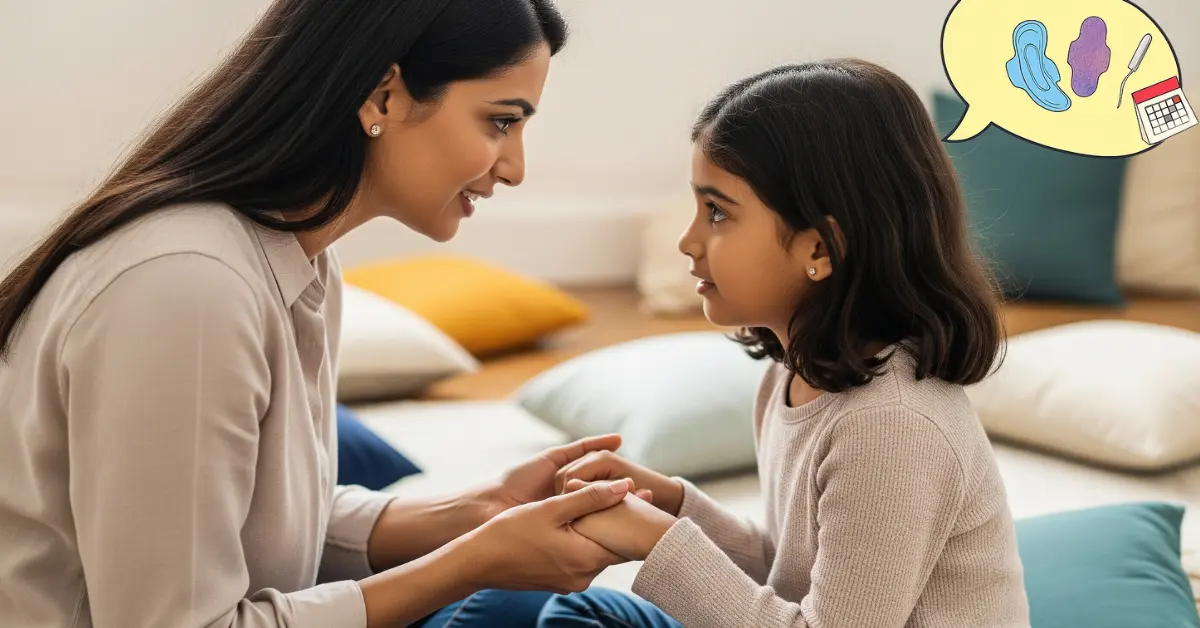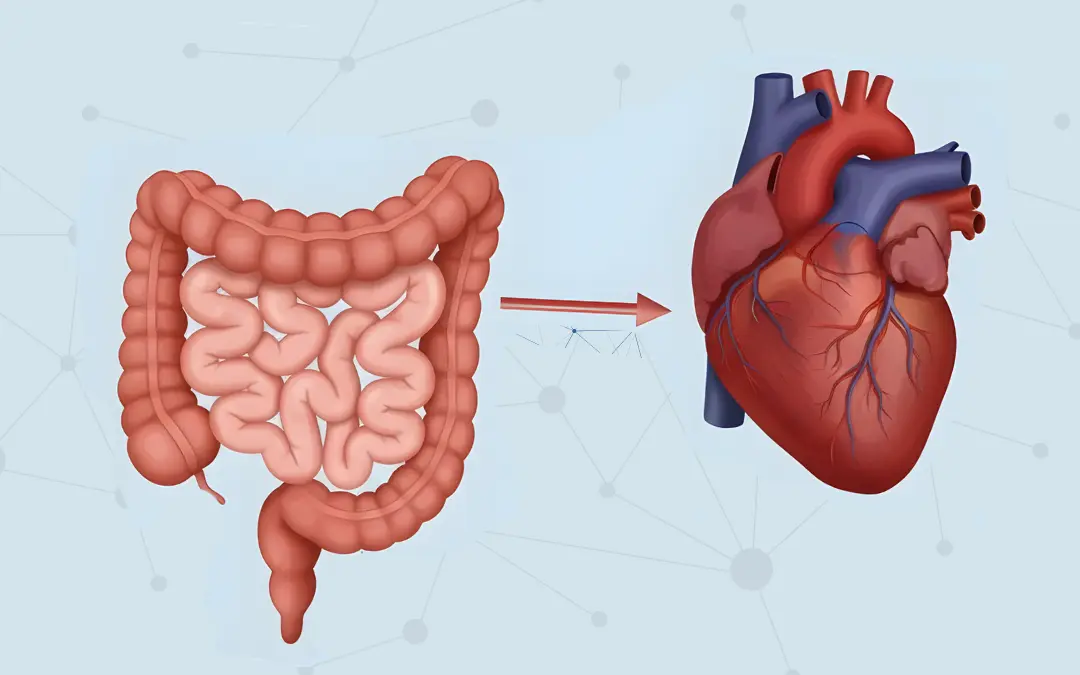- Written by Dr. Riya Jasrotia , Consultant at UWAY Health
Most of us didn’t have a proper conversation about periods while growing up. Some of us were told just the basics, some heard about it from friends, and many were left to figure it out on their own. Our mothers taught us what they knew, often with good intentions, but the times were different. Today’s world has changed, and so have our children. The way we were taught about menstruation may no longer be the right way to teach our daughters. Period education and puberty education must evolve to meet our children’s needs with clarity and compassion.
Why Menstrual Education Needs to Start Early
Girls are getting their first periods earlier, sometimes as young as 8 or 9. If you’re wondering at what age periods start, this shift is due to various physical and environmental factors. They are exposed to information and opinions from school, social media, and online platforms long before we expect it. If we don’t talk to them first, they may already be hearing things that are confusing or incorrect. This is why it’s important for mothers to start the conversation early, clearly, and without shame.
In the past, menstruation was often treated as a taboo subject. It was not openly discussed. The topic was either avoided or quickly explained with minimal detail. Today, that approach can cause more harm than good. Our daughters need to understand their bodies in a respectful and informed way. Helping them recognize first period signs and understand what’s happening in their bodies is a key part of menstrual education that supports both emotional and physical well-being.
How Period Education Has Changed Over Time
There are clear differences between how we were educated and what is needed now. We were told after the first menses had already started, often without preparation. Our daughters need to know what to expect before it begins. We were told to hide pads and stay quiet. Our daughters should be encouraged to treat their periods as a normal part of growing up. Learning about symptoms of the first period such as mood changes, spotting, or slight pain can prevent unnecessary fear. We were given vague instructions. Our daughters deserve clear, accurate explanations through open period education that encourages comfort and confidence.
How to Explain Periods to Young Girls
Start by telling your daughter that a period is a sign that her body is growing and healthy — a natural part of puberty education. Explain that every month, the body prepares for something called a menstrual cycle. If there is no pregnancy, a little blood comes out from the private part. This is completely normal and not something to be afraid of.
Tell her that the first period usually happens between the ages of 9 and 14, but everyone is different. Having the first menses earlier or later than her friends is completely normal. Explain that the menstrual cycle is the number of days from the first day of one period to the first day of the next. It usually lasts around 28 days, but it can be anywhere between 21 and 35 days, especially in the first year or two.
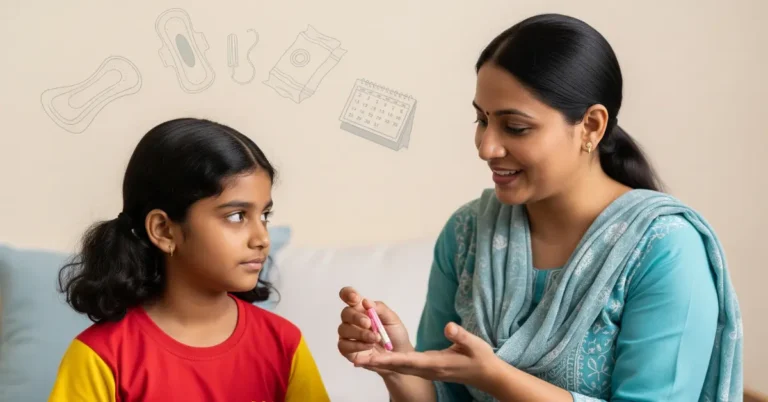
What’s Normal and What’s Not During Periods
Let her know what to expect. It is normal to have bleeding for 3 to 7 days, mild stomach or back pain, slight mood changes, and a white or clear discharge before the period. These are often symptoms of the first period, and knowing them early can ease anxiety. However, she should talk to a trusted adult or a doctor if she experiences bleeding for more than 7 days, very heavy bleeding that soaks a pad in 1 to 2 hours, pain that stops her from doing normal activities, or if her period stops for more than 2 to 3 months.
Menstrual Hygiene Tips Every Girl Should Know
She also needs to learn how to take care of herself during periods. Show her how to use a sanitary pad or period underwear. Teach her to change it every 4 to 6 hours. Remind her not to flush used pads in the toilet and to wrap them in paper before putting them in the bin. Encourage her to wash the private area with clean water when she changes and wear clean, comfortable cotton underwear.
A warm bath, rest, drinking enough water, and eating nourishing food can help with cramps and general discomfort. Practicing good menstrual hygiene or period hygiene helps prevent infection and makes her feel confident and fresh. These habits are important parts of menstrual education that go beyond just managing bleeding.
Tracking Periods to Build Body Awareness
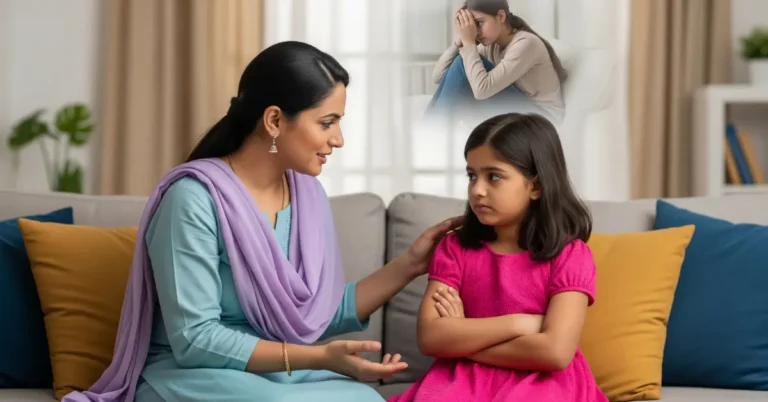
Teach her how to track her period on a calendar, a notebook, or by using a simple mobile app. Marking the start and end dates helps her be prepared and gives her a sense of control over her body. This habit is especially helpful after the first period, when cycles may be irregular. It allows her to better understand her cycle, body patterns, and identify any unusual changes early. Tracking also reinforces key lessons from both period education and puberty education.
Important Do’s and Don’ts During Periods
What she should do:
- Stay calm and remember that this is a normal part of growing up.
- Talk to her mother, sister, teacher, or a trusted friend when she has doubts.
- Keep an extra pad in her school bag.
- Drink enough water and eat well.
- Be kind to herself and others.
What she should do:
- Avoid using the same pad all day.
- Do not flush used products in the toilet.
- Do not tease others or tolerate teasing about periods.
- Do not feel ashamed. Her body is healthy and normal.
Small reminders like these can help girls navigate the first period experience with ease, while reinforcing menstrual hygiene and emotional care.
Why Boys Should Also Know About Periods
In most homes today, boys and girls grow up together sharing the same spaces, routines, and conversations. When only girls are told about periods and boys are kept out, it creates unnecessary awkwardness and stigma inside the home itself. Boys don’t need detailed explanations, but they do need the basics — that it’s a normal part of growing up for girls, not something to laugh at or be ashamed of.
A simple conversation helps them grow into respectful, supportive young men — and creates a more understanding home for everyone. Including boys in basic puberty education fosters kindness, maturity, and breaks unnecessary myths about menstruation.
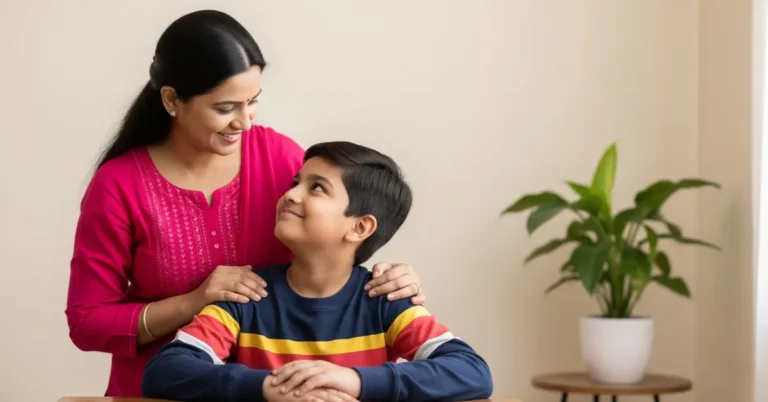
The Role of Mothers in Shaping a Healthy Menstrual Experience
As mothers, we now know better. And because we know better, we must do better. Our daughters deserve openness, clarity, and support. Menstrual education is not just about hygiene. It is about dignity, confidence, and health. And it starts with you.
Supporting your daughter through her first period, giving her the tools to manage period hygiene, and teaching her to feel empowered — not embarrassed — sets the foundation for lifelong confidence and self-care.
About Author

Dr. Riya Jasrotia
Dr. Riya Jasrotia is a young Ayurveda doctor with hands-on training across Ayurvedic hospitals and government healthcare centers. She completed her B.A.M.S from Government Ayurvedic Medical College and Hospital, Akhnoor, affiliated with University Of Jammu, J&K.

